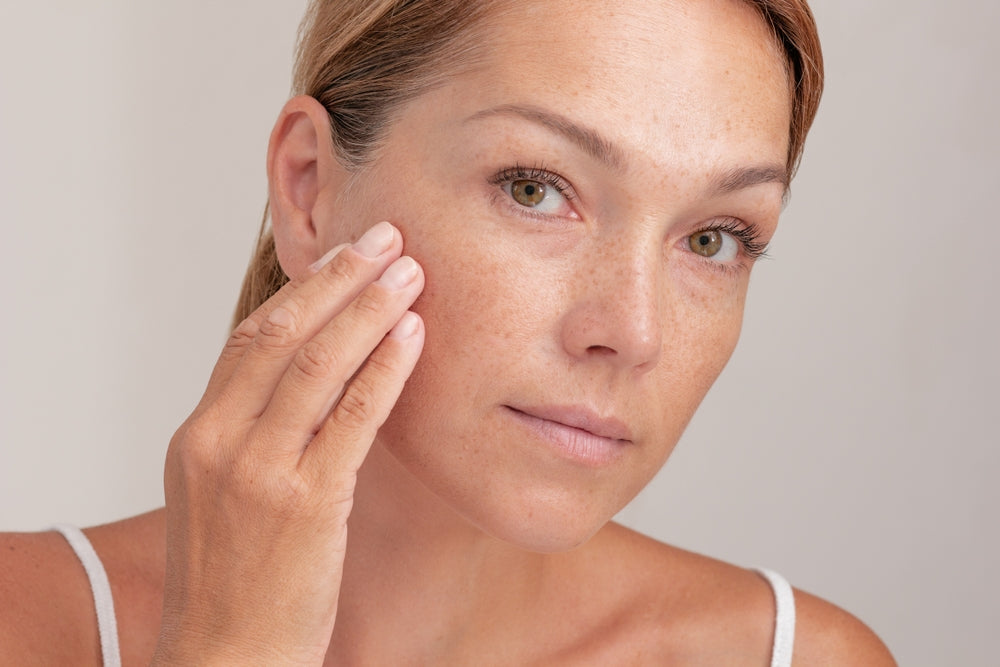People who want the best out of their skincare products spend a considerable amount of time researching ingredients, identifying what they need in different seasons, and determining their specific skin type. Although it’s slightly subjective to identify whether you’re a naturally oily or dry skin type, there’s an objective scale that can tell you how much pigment you have in your skin and how that changes your skincare routine. It’s called the Fitzpatrick skin phototype scale, and it may hold the secret to getting the best out of your skincare routine.
What is the Fitzpatrick Scale?
The Fitzpatrick scale for skin typing is a widely used method of identifying the amount of pigment in a person’s skin and tolerance to sun exposure. In fact, the FDA uses it when evaluating the SPF values of sunscreens and determining the risk of developing skin cancer in people with light to darker skin. Lighter, sun-reactive skin types always burn and rarely tan, while darker skin types tan easily and rarely burn. Whatever your Fitzpatrick Type, wearing sun protection daily and especially when in direct sunlight can help against skin cancer and maintain healthy-looking skin.
You can take a Fitzpatrick scale quiz to help you determine which one of six types, indicated with Roman numerals, from lightest to darkest, you are.
What are the Different Skin Types?
As indicated by the Fitzpatrick skin type quiz, each skin type has unique characteristics that help people determine how best to take care of their skin.
-
Skin Type I: The palest shade. This skin type burns and peels easily and rarely tans. Skin freckles easily, and often accompanies red or blonde hair. The corresponding eye color is light blue, gray, or green.
-
Skin Type II: This skin type usually freckles and burns often without tanning, and usually has blue, gray, or green eyes.
-
Skin Type III: This range of skin shades encompasses fair skin to light tan, and individuals often have hazel or light brown eyes. They occasionally experience burns and can tan, but their skin still freckles sometimes.
-
Skin Type IV: Usually an olive or light brown tone, this skin type rarely burns and tans easily, usually accompanied by brown hair and brown eyes.
-
Skin Type V: This skin color is brown to dark brown, rarely freckles, tans easily, and rarely burns.
-
Skin Type VI: The darkest skin color is deeply pigmented and tans darkly but never burns and never freckles.
Benefits of Knowing Your Fitzpatrick Skin Type
Knowing which skin type you are on this professional scale is important because it helps you determine how your skin reacts to sun exposure and what methods of sun protection will work best for you. This is especially important to measure your risk for skin cancers. Additionally, melanin-rich skin types may not be suitable candidates for certain facial procedures, such as higher strength chemical peels or laser treatments, which can result in hyperpigmentation or hypopigmentation. On the other end, fair skin is at the highest risk of developing skin cancer and sun damage, so it’s important to help your skin with high-quality sun care products.
Fitzpatrick and Other Skin Types
Using the Fitzpatrick scale in conjunction with your skin's oiliness or dryness can help you refine your skincare routine to the products and steps that best suit your skin. Whether you are concerned with the first noticeable signs of aging or looking to address specific skincare concerns, Epicuren has the high-quality formulas for you.
Professional Treatments for Your Fitzpatrick Skin Type
Your skin type can determine the treatments that are best for your skin and what should be avoided. Certain procedures, including chemical peels and laser treatments, can dramatically improve tone and texture, but they are not one-size-fits-all. The Fitzpatrick scale is often used to help professional providers recommend the safest and most effective treatments for your skin type. Below, we’ve broken down common exfoliating treatments by skin type to help you better understand what may be right for you.
Fitzpatrick Type I–II (Very Fair Skin)
Very fair skin that burns easily is typically more reactive to peels and lasers, making it important to choose treatments carefully. Light to medium-depth chemical peels, such as those containing glycolic or lactic acid, can be effective for exfoliation and brightening when used under the guidance of a professional. This skin type can also benefit from gentle resurfacing lasers; however, post-procedure redness and sensitivity may be more pronounced, making proper aftercare essential.
Fitzpatrick Type III–IV (Light to Medium Brown Skin)
Skin types in this range can usually tolerate superficial chemical peels and some non-ablative laser treatments. Mandelic acid peels are often a good choice for gentle exfoliation without excessive irritation. With careful treatment planning, laser technologies such as IPL or low-energy fractional lasers may also be considered for addressing pigmentation and texture concerns; however, caution is still necessary to avoid triggering hyperpigmentation.
Fitzpatrick Type V–VI (Medium to Deep Brown Skin)
Darker skin tones require special consideration with exfoliating treatments, as they are more prone to discoloration and hyperpigmentation. Deep peels and aggressive lasers are generally not recommended. Instead, superficial peels with ingredients like salicylic or glycolic acid, enzyme-based exfoliants, and radiofrequency microneedling can provide effective results. Treatments should always be chosen with pigment sensitivity in mind.
Our Sun Care Products
Daily protection from the sun is important for all Fitzpatrick skin types. Choose the one that is best suited for your skin type and sun care needs.
For daily protection from the sun and a glistening finish, we have X-Treme Cream Propolis Sunscreen SPF 45+. This formulation goes on sheer and moisturizes dry skin types. It also contains nutrient-rich propolis for a radiant looking complexion.
For a matte finish, we suggest Zinc Oxide Perfecting Sunscreen SPF 27. This lightweight mineral-only formula is fragrance-free and features daisy extract, hyaluronic acid, and green tea. Zinc products are ideal for individuals with lower Fitzpatrick skin types, as they blend more seamlessly.
Defend & Balance Tinted Mineral Sunscreen SPF 50 is a moisturizing sunscreen with a blendable tint that helps skin appear more even. With ingredients like chamomile flower, vitamins C and E, and argan oil, this sunscreen is good for all skin types, has a luxurious feel, and is perfect for use under makeup.
FAQs
Is The Fitzpatrick Scale Still Used?
Yes, regulatory agencies and skincare product manufacturers still utilize the Fitzpatrick skin type scale to assess the skin cancer risk of different individuals and develop products and devices that are effective across the spectrum.
How Do I Identify My Skin Type?
Feel free to use our chart above to help identify your natural skin type. Knowing whether your skin is dry or oily may be a more subjective exercise, based on how your skin behaves when not using any skincare products throughout the day.
Take Our Skin Quiz
Both the Fitzpatrick and Epicuren’s Skin Quiz can help you narrow down on the skincare products that are best for your unique needs and concerns. Level up your routine with our high-quality products that don’t require a prescription to order. Browse our catalog to find out how you can get radiant and smooth-looking skin.
--





